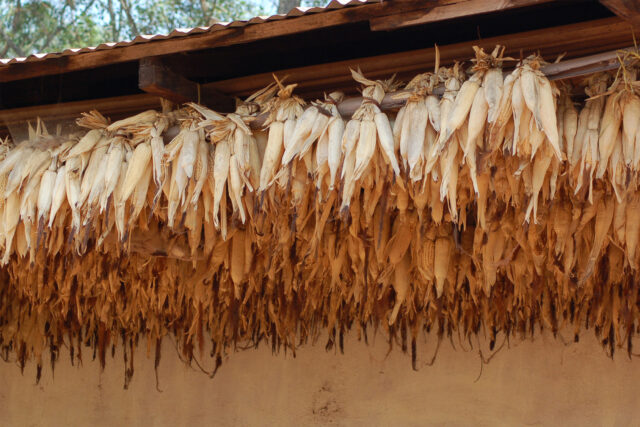
Simply African Fermentation,from Beverages to Porridges to Breads Grains
Fermentation throughout the Sub Saharan regions of Africa has an ancient history. Having an extremely challenging climate and terrain has in the past and continues to pose significant challenges to harvest and storage of food. As the need to follow migratory animals for hunts required long and arduous journeys, easily portable, highly nutritious foods were a necessity.
The process of making fermented foods thoughout the African continent as a whole, but the Sub Saharan regions in particular is not as an elaborate process as it can be in Europe. Traditional African fermentation requires no elaborate tools, techniques or facilities, making it fast, cheap and practical.
This is a great approach to fermenting fruits grains and vegetables but a lack of standardized techniques, haphazard fish and meat fermentation processes can be deadly. Salting and drying is preferable, where food safety is concerned, to drying or salting alone. However, in transient communities or poorer towns where there is a lack of solid infrastructure, curing salt is often left in heaps out of doors exposing it to a range of contaminants. And where there are no facilities where flesh can be hung to dry in regulated conditions, it is often left flat on the ground.
From Beverages to Porridges to Breads Grains Are Widely Used in African Fermentation
Maize and millet are the most widely used grains which are fermented throughout Africa. The strain of sweet, tender, small-kernel corns most commonly used throughout North America, Europe and indeed Japan are not used and should not used as a substitute for maize which has larger kernels, is far lest sweet and tends to be much more pale in colour.
Millet is the seeds of various grasses, and often is sold as a blend of several of the more than five hundred varieties found throughout the southern regions of the continent. Drought and pest resistant, as well as being able to produce two harvests in one year, it was and remains widely used in the region. While there are some of the health benefits, chiefly cardiovascular wellness, the recent trend toward gluten-free diets has millet consumption in the west; where it was previously used as animal feed, consumption of millet flour has rapidly increased as a substitute for wheat flour.
Kooko, Akuma, Ogi, Uji, or Simply Breakfast
Making porridges by boiling grains vastly predated the baking of grains going all the way back to the Neolithic era. While it goes by many names; Kooko in Ghana, Akuma or Ogi in Nigeria, and Uji in Kenya the dish is basically the same. Dried maize or millet is ground and soaked in water at room temperature for two or three days until fully fermented. It is strained and formed into a very wet dough and further fermentation takes place. This is then diluted in water and stirred to a thick cereal porridge. Of course, the use of either maize or millet, as well as the flavourings included, will change from region to region this is mainly a breakfast staple. Children will often have it slightly more diluted than adults will, and it will generally be sweetened with honey and cinnamon, while a spicier savoury version will usually include ginger, cloves and chili pepper.
Mahewu, a South African Staple Fermented Beverage
Mahewu, also spelled Mageu, or amaRhewu, is a refreshing fermented beverage made of maize and water meant to be drunk in the hotter months. It is high in carbohydrates making it a great source of energy, and helps improve digestion and absorption of B vitamins. Even though it is an incredibly popular drink throughout South Africa and Zimbabwe until recently it was only made at home. Today it is available at all major grocers and commercial brands will often be flavoured and fortified with vitamins and minerals and can even be found in instant powdered form.
Mahewu is most often simply made from maize ‘pap’or porridge, which is actually almost identical to the porridge mentioned earlier that is added to a fermenting pot containing watered-down leftovers from previous days mahewu.
Amasi, Traditional Zulu Yoghurt
Amasi, still popular in South Africa, is a thick curds resulting from fermenting cow’s milk it is similar to cottage cheese or ricotta in appearance but has a sharp flavour like yoghurt. It was originally made in a dried hollowed calabash or ‘bottle gourd’ that would be brightly decorated. Milk would be added to the calabash container and left to ferment while shaken gently occasionally until it curdled heavily. The liquid would be drained through a small plugged hole in the bottom and poured over porridge. Amasi calabash containers were never washed and the remaining bacteria left on the walls of the vessels would help hasten the fermentation process.
Dawadawa West Africa’s Answer to Miso
Sometimes called Sumbala and sometimes dawadawa, it is a fermented food made primarily from seeds of the African locust bean tree, also called néré or biglobolosa. While it is most commonly used in Ghana dawadawa can be found in homes throughout West Africa. The seeds are harvested during the rainy season from locust bean pods. Lately the Locust bean trees are in danger of deforestation leaving people to look for alternative seeds to use.
The pods are broken open and the soft, fleshy outer layer is smashed away and the hard center is washed dried and washed again before boiling. The boiled seeds are spread out wet, covered in linen and left for several days, then vigorously boiled, pounded and packed into containers to ferment. Finally, they are formed into small balls and left to dry. The finished product will have a strong, sharp cheesy scent but a flavour similar to a smokey cocoa. Dawadawa is usually added to soups and stews, but can also be cooked into rice or used as a condiment to flavour meat and fish dishes.
I’d like to add that I’ve been enjoying the music of The Wulomei Dance Company from Ghana while finishing this article and it really brightened the mood on this chilly, rainy morning. Eat well, and until next time be enjoy yourself.



